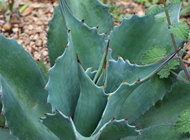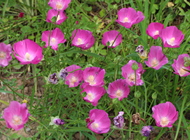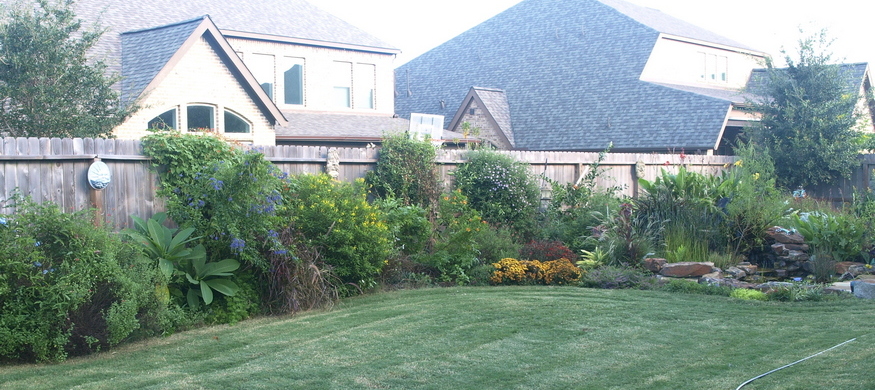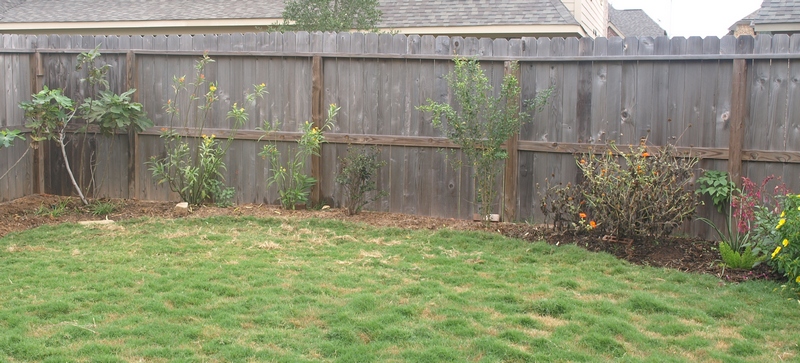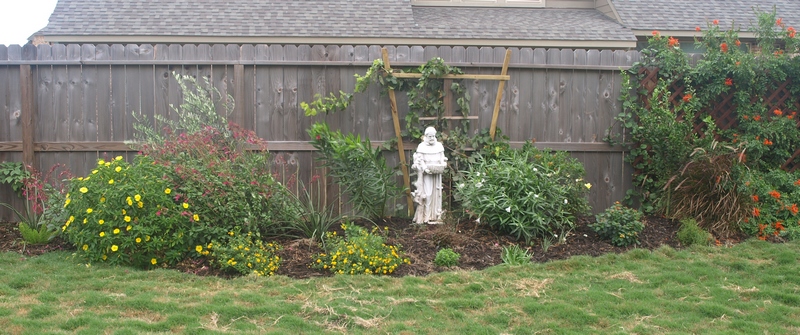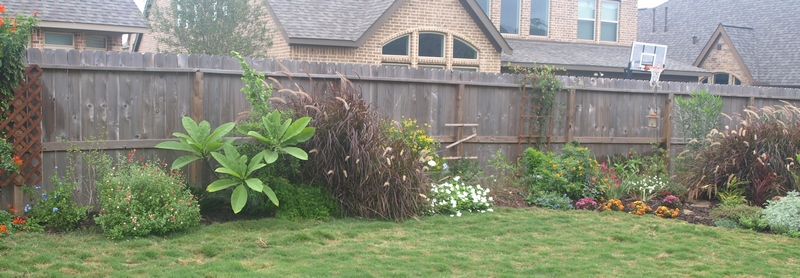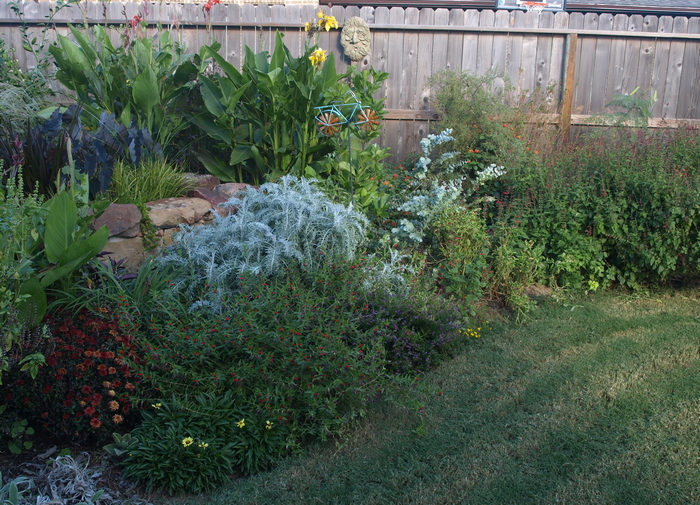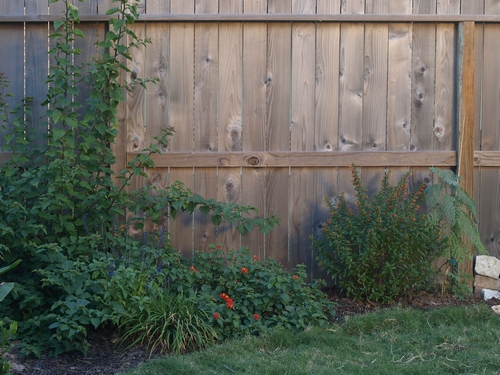The back fence border is the primary part of our back yard here in Houston – it runs all along the length of the fence that separates our yard from those of the neighbors behind us. It meets up, as you might imagine, with the left fence border on its left end and the right fence border all the way to the right. In between, the border veers inward and outward along a curvy line, swerves around the rock garden, and runs along the back of our waterfall pond. The fence at the back of the border is a little over six feet tall, and composed of cedar slats attached to structural lumber. Ours is the "ugly side", where the fenceposts and lumber horizontals are visible. Which isn't so bad, really, because it gives us plenty of places onto which to attach trellising structures. In time, we hope to see much less of the fence, when vines cover a good part of it, and trees and shrubs obscure even more. So let's talk about those vines and trees. At intervals along the back side of the border, we have various plants that want to grow upward with some support. Not all of them are really vines, and they support themselves in different ways, but each one should, if it establishes itself well, grow up along the fence, providing a variety of flowers, foliage forms, and textures along that wall of cedar slats. Starting at the left, there is a coral bean (Erythrina bidwillii). Not a vine, but will grow six feet tall and its stalks can be pruned to result in a more or less flat screen. Which is what I plan to do, because I don't want those thorny stalks venturing too far away from the fence. Next in line is a Tempranillo grape, which is supposedly suited to our climate. It has already climbed to the top of the fence, but I'm still figuring out how to best support it. An eight-foot-wide piece of lattice secured to the fence supports both a malabar spinach plant that eagerly twists itself upward, and a cape honeysuckle (Tecomaria capensis 'Sunset') that is not a climber but gratefully accepts the lattice support to lift itself up and over the height of the fence. Moving rightward, we encounter an attempt at growing a clematis (not very successful – I just don't think the climate is very suitable), followed by a Carolina jessamine (Gelsemium sempervirens) that used its first season of growth to conquer its little trellis all the way to the top. There's also a mandevilla in there somewhere, which is supposed to climb but has been just sitting there like a little rounded shrub all year – perhaps our unlabeled cultivar was a compact variety... Next is a climbing aster (Ampelaster carolinianus), recently planted and not yet inclined to climb – I hope it does so next year. I guess the bougainvillea to its right is also a vine of sorts, but we may keep it trimmed more mound-like. The line is concluded by an Arabian jasmine (Jasminum sambac 'Maid of Orleans') planted in a spot that's mostly shaded by the live oak at the far right end of the border. It hasn't been in a hurry to use the horizontal supports I provided to find a way up; I assume it will become more vigorous in future years. A little further out from the fence are a sequence of trees and large shrubs that should anchor the border in years to come and provide an interesting backdrop to all the other plantings we'll be incorporating into the border as we continue to learn what we can grow around here. Again moving from left to right from the left corner to the pond area, we have a couple of fig trees (which I consider part of the left fence border), a crape myrtle, a pomegranate, a Texas ebony, an olive, an oleander, a lime tree, an orchid tree, and a duranta. The section behind the pond includes a couple of satsuma orange trees, another oleander, and a willow bottle brush. And finally, at the far right end, there's a live oak that was planted by the landscaper before we bought the house. You think we have enough trees? Currently growing in our back fence borderA few more photos showing different views of the back fence border
Some older photos, to see the progression...
Last modified:
June 27, 2020 |
|||||||||||||||||||||||||||||||||
